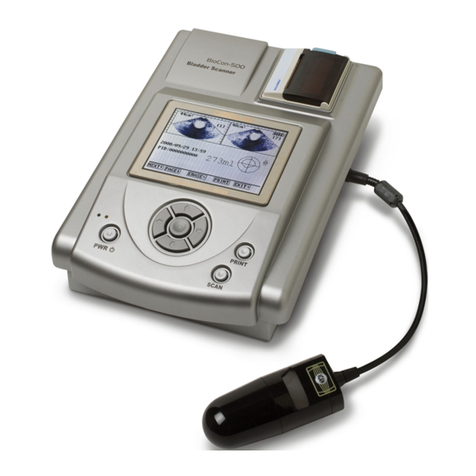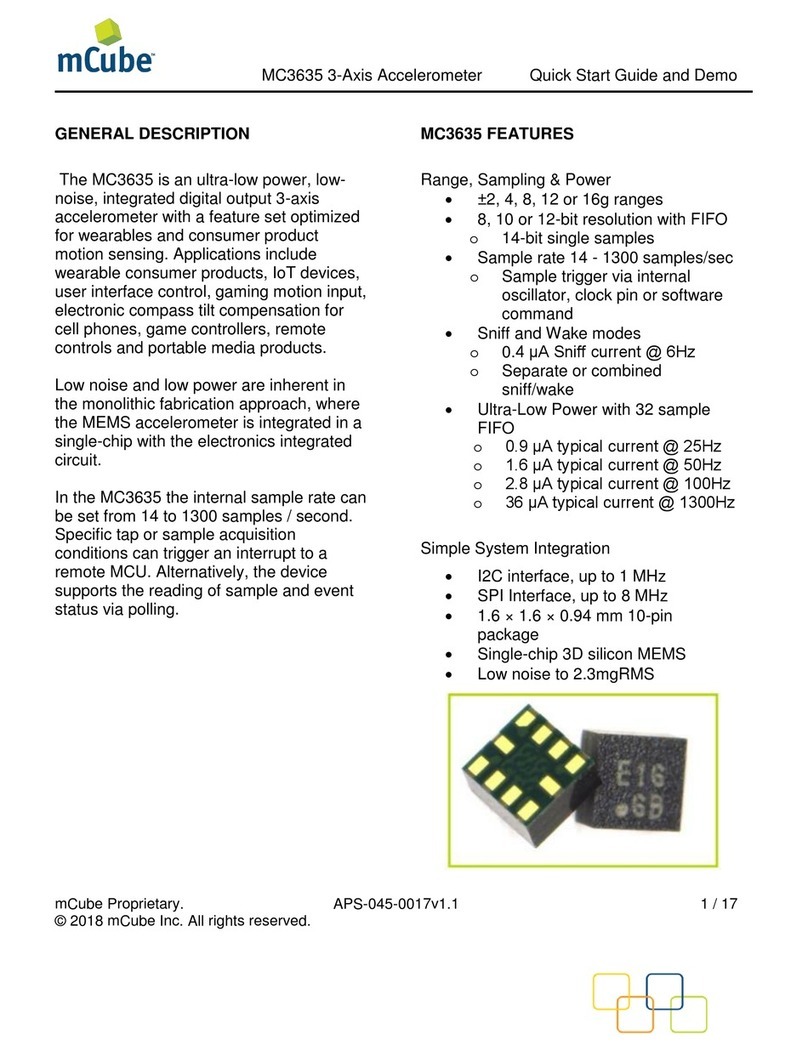The MC3419 Evaluation Board Quick Start Guide and Demo
mCube Proprietary. APS-045-0033v1.0 1 / 20
© 2020 mCube Inc. All rights reserved.
GENERAL DESCRIPTION
The MC3419 is a small form factor,
integrated digital output 3-axis
accelerometer with a feature set optimized
for cell phones and IoT product motion
sensing. Applications include user interface
control, gaming motion input, electronic
compass tilt compensation for cell phones,
game controllers, remote controls and
portable media products.
The MC3419 features a dedicated motion
block which implements embedded
algorithms to support “any motion” and
shake detection, tilt/flip and tilt 35 position
detection.
The EV3419A is a prebuilt circuit board with
MC3419 LGA-12 3-axes sensor. The
MC3419 has internal sample rate from 0.5
to 1000 samples / second and measures
acceleration with a wide usage range, from
+/-2g up to +/-16g, and 16-bit high precision
ADC output, which is easy to fit on top of
the microcontroller, such as an Arduino.
The accelerometer communicates via
I2C/SPI and gives out motion detection or
sample acquisition conditions to trigger an
interrupt toward an MCU.
The sensor data is easily readable by
connecting DVDD to 3.3V, GND to ground,
and SCL/SDA pins to your Arduino I2C
clock and data pin respectively. Download
the MC3419 library from GitHub onto the
board, run the example sketch, and then
sensor data shortly comes out in raw data
count and SI unit accelerometer
measurements. An easy-to-use
demonstration on EV3419A using the
Arduino platform is depicted in this
document.
MC3419 FEATURES
Range, Sampling & Power
•±2,4,8,12 or 16g range
•16-bit single sample resolution
•16-bit resolution with FIFO
•0.5 to 1000 Hz Output Data Rate
•4 μA typical Standby current
•Low typical active current
Simple System Integration
•I2C interface, up to 1 MHz
•SPI Interface, up to 10 MHz
•2×2×0.92 mm 12-pin LGA package
•Single-chip 3D silicon MEMS
•RoHS compliant































